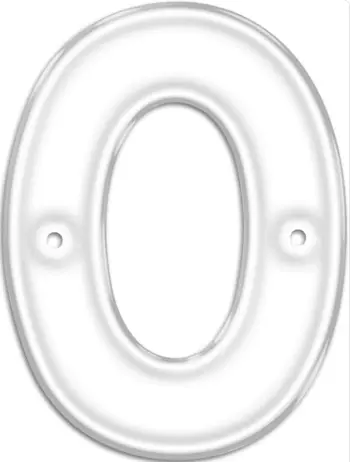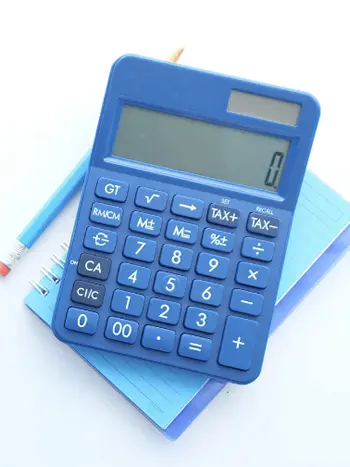We’re all using the number zero in everyday life without thinking about it. Even little kids understand the concept of zero. However, do you know who invented the number zero and why?
The concept of zero was invented by the Babylonians. Also, Mayans and Indians had their own version of it. It was also used by the Chinese and Egyptians, but it wasn’t until the 13th century that it became widely used in Europe.
It might seem like a small thing to us now, but the invention of zero enabled people to do arithmetic with numbers of any size. In the following paragraphs, we’ll discover more about the history of this special number and its meaning for humanity.
Also Read: Invention Ideas for School Projects
Who Invented the Number Zero?

These days it’s hard to imagine life without using the number zero. We use it under different names in math, games, and in everyday life.
Even though it’s impossible to imagine, this number wasn’t always there. So, who invented the number zero?
The Babylonians used a base-sixty number system, whereas we use a base-ten system today.
They used a symbol consisting of two small wedges for trade.
Its function was just to be a placeholder and didn’t have any value of its own.
The Mayans also used a similar concept they developed independently of the Babylonians. They used a zero marker in their calendars.
A great surprise is that ancient Greeks, known for their extraordinary discoveries in math, didn’t have either the concept or the name of the number zero.
Concept of Zero Origin
The concept of zero originated with the Babylonians, but it was in India where mathematicians developed its use within an advanced number system.
In India, mathematical equations were praised as poetic lyrics.
The words linking ‘void,’ ‘sky,’ and ‘space’ represented nothingness or zero.
Pingala, the Indian scholar used binary numbers, which have their roots in Sanskrit. He was the first to use the word “sunya” for zero.
The concept of zero as a number—a mathematical placeholder that had no value in itself—was first introduced by the Indian mathematician Brahmagupta, who wrote down the symbol for “zero” – using a dot below other numbers.
Before this usage was common, earlier mathematicians interpreted blank spaces to mean “nothing.”
Brahmagupta’s rules for mathematical operations such as addition and subtraction are among the earliest uses of zero.
Aryabhatta, an Indian mathematician and astronomer, introduced the concept of zero to the decimal system.
Who Invented Zero in Mathematics?
In 628, a Hindu astronomer and mathematician named Brahmagupta developed a symbol for zero that consisted of a dot underneath numbers.
This was the first known use of a zero placeholder, although it did not yet have a role in arithmetic.
We know about this largely thanks to a mathematical manuscript called the Bakhshali manuscript, discovered in 1881 by a local farmer.
It dates back to the third century but was originally considered to be from around 900 AD.
After zero first appeared in Indian mathematics and then traveled to China and back to the Middle East.
In 773 AD, mathematician Mohammed ibn-Musa al-Khowarizmi was the first to work on equations that were equal to zero (now known as algebra), though he called them ‘sifr’.
By the ninth century, his innovation had been incorporated into the Arabic numeric system in a similar shape—oval like our present-day one.
Who Invented Zero Aryabhatta or Brahmagupta?
When it comes to the history of zero many people are dealing with the Aryabhatta vs Brahmagupta battle and not knowing who was the original inventor.
Aryabhatta and Brahmagupta are both credited with using zero in their work.
Aryabhatta is believed to have been the first mathematician to use zero in recording decimals.
On the other hand, Brahmagupta is credited with discovering the properties of zero, such as how to subtract a number from itself.
However, there is still some debate over who was the first to use zero in their mathematical calculations.
Aryabhatta may have been the first to use zero, but Brahmagupta was the first to explain how it could be used as a placeholder.
He also discovered that zero multiplied by any number is still equal to zero.
This is a very important property of zero, which is why he was given credit for discovering it in the first place.
When Was Zero Invented?
So, when was the number 0 invented? The number 0 was invented around 3000 BC in Mesopotamia, which is now modern-day Iraq.
The first written record of the number 0 was found on a clay tablet that was dated to around 2900 BC.
This tablet was used by merchants to keep track of how much money they owed their customers.
A similar symbol also appears on many artifacts from ancient Sumer, including at least one that dates to 2400 BC and is thought to have been used as an additive placeholder in addition problems.
The ancient Egyptians did not have a symbol for zero, although they did have symbols for empty spaces in their equations.
In fact, they didn’t even have separate symbols for 1 and 10.
Instead, they would write these numbers as two or three strokes arranged vertically to represent units or as a single stroke representing tens (which could be read as “one”).
When Was Zero First Used in Mathematical Operations?
The first use of zero in mathematics was documented in Babylonian mathematics.
The Babylonians used a base 60 system, which is why there are 360 degrees in a circle and why the hours are measured in 60 minutes.
The Egyptians also used a base 10 system with hieroglyphic numerals that included hieroglyphs for 1 to 9 and 10 to 90 as well as symbols for 100 and 1,000.
Why Was Zero Invented?
Many people are uncertain about why was zero invented. Zero was invented so that people could use it for their own math operations needs.
It resulted in better math operations which made their life easier.
Zero made it possible for people to use negative numbers and fractions which were not possible before the invention of zero.
Zero made it possible to do more complex math operations which resulted in a better understanding of math.
It also made it easier for people to calculate things such as square roots, cube roots, and many other operations.
The Invention of Zero and its Importance

The invention of the number zero and its importance is arguably one of the greatest contributions to mathematics.
I can say that it changed the course of civilization. Zero was important not just for mathematicians, but also for traders and astrologists.
It made calculations easier, and it allowed them to measure things more precisely than ever before.
But why did it take so long for people to come up with the idea of zero? How did they figure out that there was a number between one and two?
And what does zero have to do with the Hindu–Arabic numeral system we use today?
The earliest civilizations had no way to represent what we could call ‘zero’ (a number that can only be written as 0).
This meant that when they did calculations, they couldn’t work out what happens when you divide by zero as we do today – because there was no way to represent zero!
How Was Zero Created?
So, how was zero created? Zero was originally used to mark an empty space.
It was first used in India, where it was called shunya—the word for “void” or “nothingness.”
There are many different ways of writing zero. In India, they used a dot, which was called Bindu. In China, they used a circle or dot, which was called yin.
In Babylon, they used a slanted line that represented water flow, and the Egyptians wrote it as a symbol for the eye of Horus, who represented protection and security from enemies.
Zero Was Invented by Which Country?
Can you guess zero was invented by which country?
It was invented by the Babylonians, who lived in ancient Mesopotamia.
Babylon was located in present-day Iraq, and the Babylonians were one of the first people to use a base-60 number system.
They also developed a way to represent numbers digitally that is still used today.
They divided the day into 24 hours, each hour into 60 minutes, and each minute into 60 seconds.
The Babylonians also used a base-10 number system for counting money and measuring land area.
What If There Was no Zero?
Can you imagine what if there was no zero? Zero is the most important number in math and science.
In fact, if it didn’t exist, we wouldn’t be able to do any of the things we do today!
But the world would be a different place if we didn’t have zero. Without it, we wouldn’t be able to count or do the math. In fact, many things in this world rely on zero being around!
That’s why I think it’s important to keep zero in our lives, even though it does create some problems for us sometimes.
We can’t do without it because then we wouldn’t be able to count anything!
History of Zero
Zero is a number that has been used in many different ways throughout history.
It was first used as a placeholder, and then it was used to represent nothingness. It was also used to represent empty space, or nothingness again.
It’s almost impossible to tell where the number zero history begins.
The number 0 was invented in ancient Mesopotamia, now modern-day Iraq.
The first written evidence of the origin and use of numbers dates back to around 2900 BC when merchants in Mesopotamia used clay tablets as a way to keep track of their debts.
Ancient Sumerian documents also include similar symbols, as do artifacts from other cultures.
The ancient Egyptians used zero as a placeholder in some of their equations but did not have an actual symbol for it.
They also had no symbols for numbers greater than 10 (although they did use Egyptian hieroglyphs to represent large quantities that were too many to be counted).
The number reached Baghdad, Iraq by 773 A.D. A Persian mathematician named Mohammed ibn-Musa al-Khowarizmi worked on equations that equaled zero in the ninth century.
In its earliest form, the zero was known as “sifr”—from which we derive our word cipher.
The dot that denoted it took on an oval shape in 879 AD and closely resembled the modern-day version.
The number zero was first introduced to Europe in the middle of the twelfth century when the Moors invaded Spain.
The Italian mathematician Fibonacci took the concept further by using it to do equations without an abacus.
In 1600, the concept of zero spread to many European countries.
FAQ’s
In the following section, you can check answers to the most common questions when it comes to this topic.
Did the Mayans invent 0?
The Mayans invented zero independently approximately at the same time when Babylons invented it.
Is zero a number or not?
Zero falls into the whole number category, the natural numbers category, and the real numbers category. It also falls into the non-negative integer category.
Is zero real or imaginary?
Zero has two different roles in mathematics, it is both a real number and an imaginary number.
Conclusion
The answer behind the question of who invented the number zero is much more about the people fighting to expand their knowledge than it is about the concept itself.
By studying the key figures that helped build our mathematical foundation, we can discover a greater truth about not just the history behind this number, but also the nature of innovation and progress.
It’s important to have a sense of where everything came from.
It’s easy to mistake progress as an inevitable upward slope toward enlightenment when in reality it takes consistent effort to get things right.

